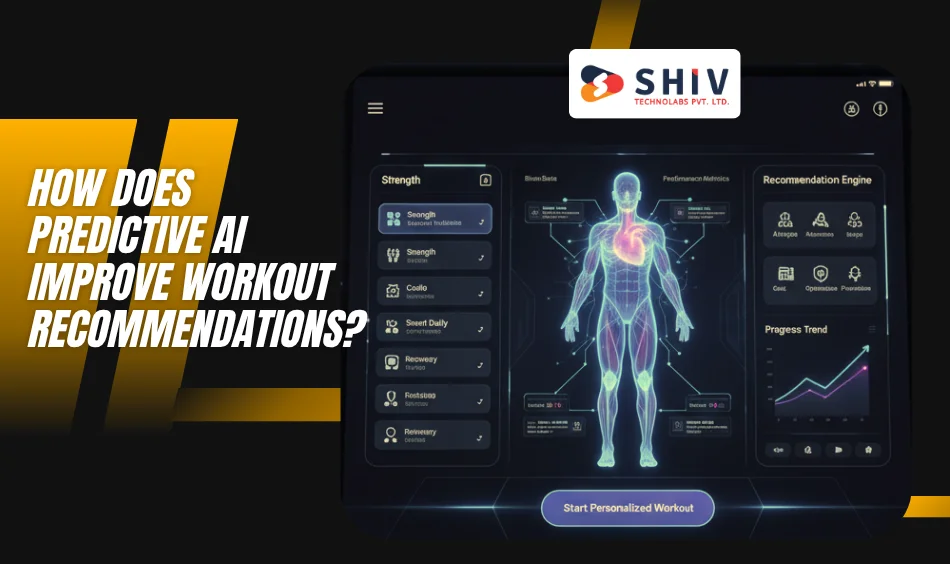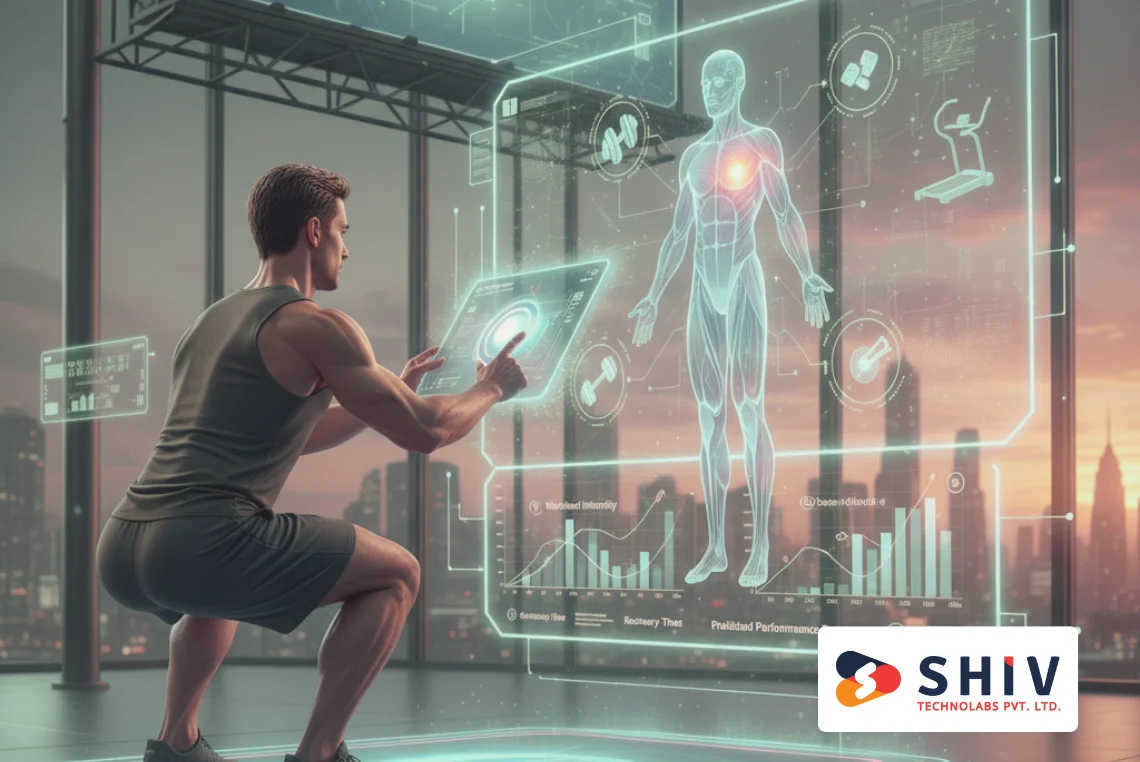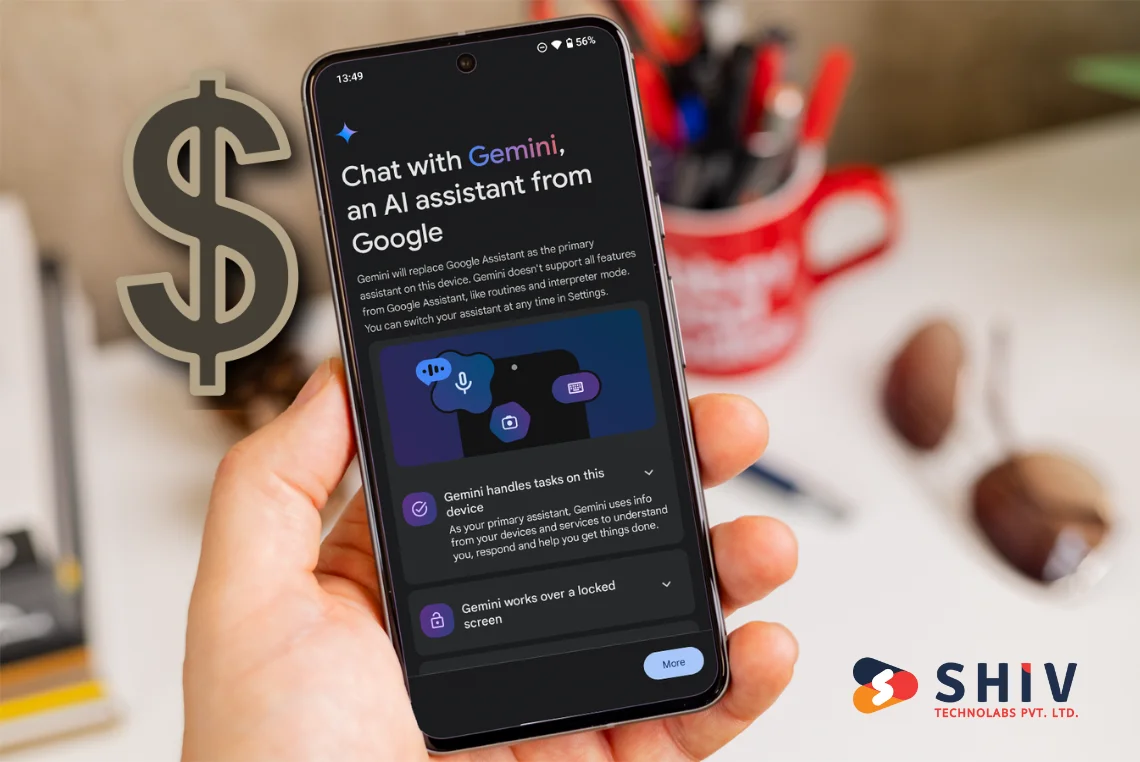Table of Contents
Fitness apps have always transcended step counts and calories burned. Today we can witness a step in the right direction: with the aid of predictive AI services, fitness apps are able to read the real-time information, comprehend the user behaviour and provide AI exercise suggestions in the moment they count.
The global fitness app market is set to grow by over 30%. This marks a great opportunity to make the most of it.
For companies, collaborating with an AI development firm offers an opportunity to introduce a smarter, more personalized fitness platform.
In this article, we will discuss the evolution of predictive AI in fitness apps.
What Is Predictive AI and How Does It Work in Fitness Apps?
Predictive AI constitutes predictive algorithms and models that predict which future events or behaviours are expected based on the analysis of past and present data. In a fitness-app scenario, it entails going: Yesterday you did X, to: You need to do Y today, but with the foresight and the personalization to it. This shift forms the basis for the world’s AI-powered fitness app development.
The system records user history, biometric inputs (heart rate, sleep, recovery), activity patterns and contextual data.
Here’s how it works in fitness apps:
- It uses machine learning models to identify patterns, correlations, and trends (such as when a user’s performance decreases or recovery is not optimal).
- It predicts the intensity of the next workout and the type of rest the user should undertake to maximize progress and reduce injury.
- According to forecasts, it causes customized recommendations, modifies habits or suggests healing plans.
Basic data points employed by AI are:
- Calories burned
- Sleep hours
- Workout frequency
- Stress level
- Heart-rate variability
- Recovery status
- Activity type and duration
When these inputs are available, the system can make significantly more accurate predictions of health outcomes and performance trajectories. The predictive analytics used in fitness apps provide a much more powerful user experience and engagement, as users feel the app knows them.
How Does Predictive AI Improve Workout Recommendations?

Classical fitness applications tend to plot a workout routine and ask users to follow it. In comparison, AI workout recommendations will provide the user with a routine that evolves as they do. The app also tracks your performance, measures your fatigue and optimizes it.
Some specific capabilities:
- AI measures performance metrics and modifies the challenge of future exercises.
- It recommends the best rest durations based on the fatigue accrued or a lack of sleep.
- It forecasts the degree of motivation in the users and reminds or urges the user in time when the engagement may decline.
Here’s a comparison table:
| Feature Category | Traditional Fitness Apps | AI-Powered Fitness Apps |
|---|---|---|
| Data Use | Basic historical logs and manual inputs | Continuous streams of biometric + behavioural data |
| Personalization | Generic plans for broad segments | Individualized routines based on personal history and trends |
| Adaptation | Static or manual adjustment needed | Dynamic changes in real time based on predictions |
| Retention | Lower because of a mismatch | Higher because the app stays relevant and responsive |
With these smart exercise tips combined, users of the fitness app will feel that the app is, in fact, their health partner, not just a schedule. Customized exercise routines generated through predictive AI make the connections more loyal and productive.
How to Build an AI Fitness App with Predictive Features
For companies considering developing an AI-based fitness application with predictive capabilities, the following is a systematic roadmap for building one.
Step 1. Specify User Features and Goals
The first step is to identify the key user segments (e.g., beginners, experienced athletes, recovery clients) and purposes (e.g., weight loss, strength, endurance, injury rehabilitation). Choose the features that are most important: personalised workouts, tracking, social features, and coaching. The clear goals will make sure that the predictive AI functionality of fitness sites is on point with what matters to the users. For industry context, see our wellness app solutions.
Step 2. Gather and compile high-quality data.
Good forecasts have to be based on good data. Gather user biometrics information (heart rate, sleep, activity), behavioural information (workout frequency, skip rates), environmental/context information (time of day, rest days), and user input information (mood, perceived exertion). Wipe, sanitize, and store it in a data warehouse or in the cloud. This training is the basis of proper AI models.
Step 3. Develop Leading Edge Predictive Capabilities
Introduction of predictive modules based on:
- Performance forecasting: prediction of future development by the present trend.
- Injury prevention: identification of overtraining patterns and identification of risk.
- Nutrition forecasting: linking dietary information with exercises to prescribe nutrition changes.
- Motivation monitoring: determining probable drop-off points and delivering a prompt.
Step 4. Combine Significant Technologies and Contributes
Some of the most common top integrations include wearable sensors (smartwatches, fitness bands), heart rate APIs, sleep-tracking modules, and cloud-based AI models. Such integrations enable uninterrupted information flow and an uninterrupted user experience. The more sensor input and context input you have, the smarter the predictions.
Step 5. Design UI/UX, Test, and Deploy
Create an easy, user-friendly interface that displays forecasts in an understandable way: “Your best next workout, you need a rest day, use this alternative exercise instead. Test your algorithms, tuning thresholds, and acceptance by human beings through beta testing. Introduction of the MVP, gauge the interaction, repeat. For scope and sprints, our mobile app development page explains planning steps and release paths.
With this roadmap, you aren’t merely creating a product that sits there, left behind as the user moves on with life.
How Predictive Analytics in Fitness Enhances User Engagement

Predictive analytics in fitness is not just a number display, but rather a live experience which will have people returning again and again.
Personalized Weekly Goals
It is okay to set generic goals each week, but predictive models set goals depending on real-time behaviour and projected performance. The target is realistic but challenging to the user.
Adaptive Challenges
The app can adjust obstacle levels, exercise type, and duration based on physical exhaustion, relaxation, and the user’s mood, rather than relying on predetermined workout regimens.
Behaviour-based Reward Systems
By predicting drop-off probability you are able to deliver push notifications or incentives when interest is waning – avoiding churn before a drop occurs.
Example: A fitness startup applied predictive analytics to improve retention by 35% by adjusting workout intensity based on fatigue scores.
Using these methods, apps are used more often, and there are increased engagement and decreased user abandonment.
Cost to Build a Predictive AI Fitness App in 2026
Let’s get real about budgets. The cost of developing a predictive AI app to train your fitness is quite different depending on the complexity, depth of data and integrations among others.
| Feature level | Estimated Cost Range | Description |
|---|---|---|
| Basic AI features | $10,000 – $25,000 | Simple recommendations based on minimal data |
| Advanced predictive modeling | $30,000 – $70,000 | Real-time predictions, wearable sync, more data |
| Enterprise fitness platform | $80,000+ | Custom AI, creator dashboards, multi-device |
Cost factors to consider:
- Data collection Data preparation: popularization, cleaning, storing enormous amounts of user data.
- Training time of algorithms: prediction model designs, iterations, and validation.
- Wearables integration: connecting sensors, APIs, and making data flow clean.
- UI/UX complexity: seamless presentation of prediction, adaptive content.
- Cloud infrastructure: real-time analytics, data pipeline, and AI services.
For deeper budgeting inputs, see:
To obtain accurate cost estimates, it is necessary to engage an AI development firm familiar with fitness and predictive AI.
Why Fitness Startups Choose Predictive AI Over Traditional Models
When you contrast the conventional data tracking with the predictive intelligence, the distinction is straight forward:
Conventional Tracking vs Foreseeable Intelligence
Conventional applications contain historical workouts and present metrics. Predictive AI goes further, is predictive, anticipates what will happen, personalizes routines and avoids alienation.
Predictive AI Competitive Advantage
- Increased customization: When the app is more personal, users spend more time on the app.
- Improved retention: Adaptive features and intelligent nudges decrease the drop-off.
- Continuous learning: The app also becomes smarter as user-provided data increases, and it can be used to support custom AI fitness technology.
Reasons to integrate predictive AI now
- Market trend: Artificial intelligence fitness apps will take over by 2027.
- User demand: Smartness and adaptability. Smart people demand smart experiences, not fixed plans.
- Long-term ROI: A well-engineered single app creates value not in months, but in years.
And, yes, collaborating with an AI building company can assist you in installing the proper architecture, scaling in the proper way, and concentrating on business achievement instead of solely on features.
What’s the Future of Predictive AI in Fitness and Health Apps?
In the future, AI predictors in fitness apps will be much more advanced than they are today. Here are key trends:
Real-Time Adaptive Coaching
Live biometric data (heart rate, motion sensors) will be utilized to customize the workouts in real-time by the apps. One can imagine breaking the routine in the middle of a session since the system can detect that you are tired.
AR/VR Immersive Training Integration
Integrate predictive algorithms with experience feedback-what you are about to achieve will be shown in AR; AI will modify the world to your achievement.
Predictive Health Alerts and Telehealth Connection
Your fitness app will not just keep track of workouts: It will tell you when you are at risk of an injury, deliver health notifications and even connect you with a telehealth specialist.
Compliance with Ethical Data Usage and Privacy
The greater the predictive capabilities, the greater the concern about data privacy. Ethical usage and compliance will be put at the forefront by wise developers. See our approach to evolving models in adaptive AI development.
Finally, predictive AI is transforming fitness from merely tracking to anticipating what the user wants to do next. Only successful apps will become true companions on health journeys.
Conclusion
The predictive AI is reshaping the principles of the value the fitness app offers. By turning data into smart workouts, enhancing personalisation, increasing engagement, and predicting user outcomes, businesses investing in this solution precondition their long-term growth. If you’re ready to bring your vision to life, reach out to the leading predictive AI development company.
At Shiv Technolabs, we specialise in developing modern fitness platforms that combine top-tier AI capabilities, user-centric design, and scalable architecture. Whether you are launching a niche fitness brand or a full-scale health ecosystem, our team of experts in AI-based workout recommendations and predictive fitness analytics is ready to partner with you. Reach out today and let’s build a smarter fitness future together..
FAQs
What is predictive AI in fitness apps?
Machine learning models and user data are used in predictive AI in fitness apps to forecast changes in workout needs, performance, and motivation. By doing so, the app guesses what the user should do next rather than simply responding to what has been done.
How accurate are AI workout recommendations?
The accuracy is greatly influenced by the quality and quantity of the data, the relevance of the features, and the quality of the model training. An increase in user data and improved algorithms will yield more accurate forecasts and more effective AI workout recommendations.
Which features make an AI fitness app stand out?
Three major features: customized exercise programs, which change with time, predictive recovery and fatigue monitors that help in injury prevention, and adaptive goal recommendations, which modify depending on user behaviour and context.
How much does it cost to build an AI fitness app?
The potential cost of developing an AI fitness app as of 2026 includes a wide range of between 10,000 and 80,000 dollars to develop a very basic application, and up to an enterprise-level application. The price is determined by the level of predictive AI, wearable, and server integrations.
Why should startups integrate predictive AI into their fitness apps?
The competitive advantage of startups is that they utilize predictive AI: this enhances the user experience, reduces churn, improves monetization through personalized experiences and makes the app appear smarter and more adaptable than merely monitoring data.






















